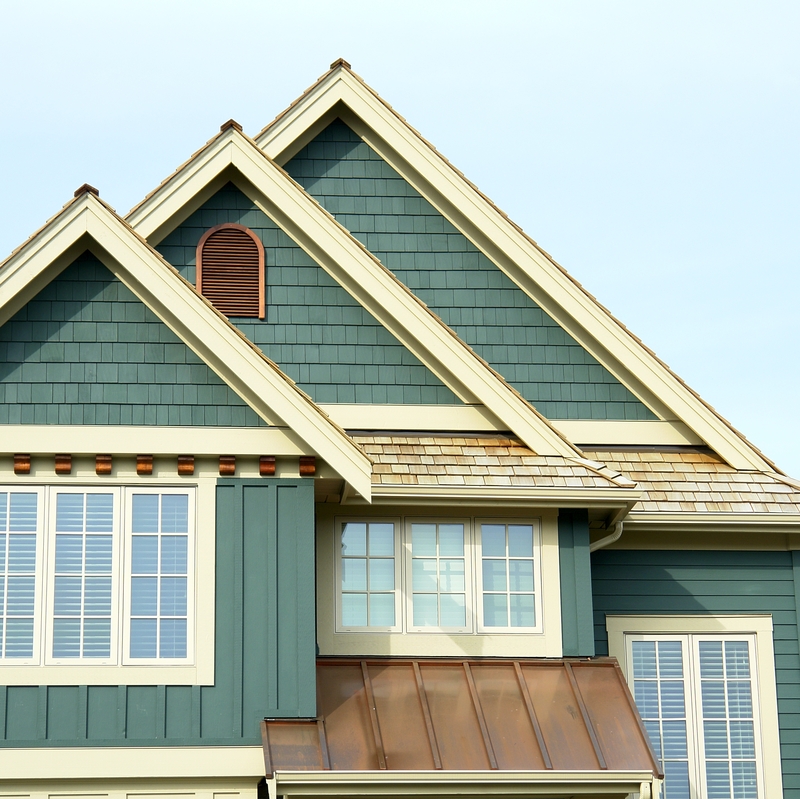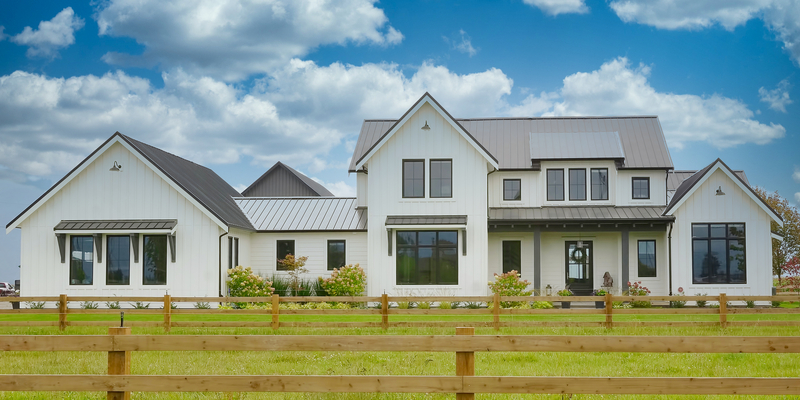
Once you’ve determined what key functions you want your siding to have, you then have to choose a style. There …

Thinking about getting new siding? Here’s why it’s so important to make the right choice.
What differentiates the best house siding installations from their neighbors? It’s not just about picking a color that fits a given home or working with an installer who gets the job done quickly and cleanly. Like any other home investment, siding is a big purchase. Property owners who take time to consider the options carefully in advance usually suffer far less buyer’s remorse.
How can homeowners tell what’s right for them? These pointers break down the key disadvantages and strengths of the major types of siding.
Call Your local Storm Guard Roofing and Construction for more about choosing the right siding for your home.
Siding serves many purposes. In addition to acting as a home’s most prominent protection from Mother Nature, it can improve a building’s ability to maintain consistently comfortable interior temperatures. Since fixing siding is far less expensive than rebuilding structural elements, such as load-bearing walls, it can be replaced more easily in the event of storm damage and other problems.
According to SFGate, installing new siding on a home can significantly boost its resale value. Although each case differs, homeowners who complete these projects often raise their homes’ asking prices by upwards of 70 percent of the siding’s cost. Considering the energy savings that come from having better heating and cooling efficiency, installing a siding upgrade can be quite a budget-wise choice.
Manufacturers make siding from many different materials. While the earliest variants were made from grass and other plant-based thatch, modern technology has given contemporary homeowners significantly more freedom of choice:
Vinyl siding is the most popular option for new homes. This is partially because people like being able to clean it with nothing more than a hose. Since vinyl is a plastic, manufacturers can create it in many different colors and styles. It’s also extremely affordable and compatible with certain forms of insulation.
Vinyl isn’t an environmentally friendly building material, and it can bend and warp with changing temperatures. Also bear in mind that although vinyl siding withstands water to a certain degree, it’s not 100 percent waterproof: Make sure to work with an installer who has the expertise to seal it properly.
Steel siding is more common on industrial buildings, but it fulfills a number of residential roles. As the ultimate in low-maintenance, fire resistant, eco-conscious siding, it’s popular with people who don’t want to deal with upkeep.
Bad steel siding installations can result in rust and discoloration. Its weight is often responsible for increased installation costs, and some people dislike its sterile appearance.
Fiber cement siding is a step up from vinyl. Composed of sand, plant fibers, clay and other mostly natural ingredients, it’s a good option for upgrading homes to improve their fire resistance and get that iconic wood finish without the risks of insect infestations or the need for yearly recoloration.
The downsides of fiber cement siding include that it’s heavier and more expensive than some alternatives. It also needs occasional repainting and touch-up work.
Manufacturers can produce wood siding in a variety of aesthetically pleasing forms, including classic shingles, clapboards, vertical boards, and large sheets used on commercial and utility structures. By using wood that resists rot, such as redwood or cedar, it’s possible to outfit a home with a long-lasting covering.
One of the nice aspects of wood siding is that it’s a renewable resource. On the other hand, these organic substances may be inappropriate in places where wood-boring pests, such as termites, are a major issue. It’s also worth considering that even though wood siding grants homeowners lots of freedom to personalize their properties using paints or stains, this material demands regular maintenance.
Insulated siding improves on vinyl by including expanded foam. By filling the gap between a building and its siding, this foam significantly limits heat leakage. The foam also works to stabilize the thin plastic siding material so that it lasts longer, resists impacts and wind more effectively, and looks straighter.
Stone siding comes in many forms. Homeowners often favor it for its always-fashionable earth tones and ability to last for more than a century with little upkeep.
In some cases, the stone used in masonry siding is a synthetic substance made of fiber cement, asphalt or other composite materials. Manufacturers can also use quarried stone, such as slate. Be aware that these materials have notably higher initial costs than many alternatives. Their high density and weight also mean that installations may demand extra structural support improvements.
Aluminum siding is well-known for its longevity and structural integrity. Manufacturers can fabricate it to suit different stylistic tastes, minimize corrosion and create interesting textures. Although metal siding is pricier than PVC, it’s more durable, and some people prefer its classier appearance.
There are some drawbacks to aluminum, like any siding choice. Aluminum tends to dent easily and replacing a single panel or even a section of panels can prove difficult both from a construction standpoint as well as from the point of view of matching existing colors. Aluminum siding tends to fade over time, preventing an easy match-up.
Thanks to their unique characteristics, different kinds of siding are better for different environments and home exterior needs. There are also a number of composite options that combine some of the best features of other siding products. Contact Storm Guard Roofing and Construction in Charleston, SC to consult with a professional about the best option for your home. Call us now for your FREE exterior home inspection.

Once you’ve determined what key functions you want your siding to have, you then have to choose a style. There …

Now that the weather is getting cooler, you might have noticed a few drafts sneaking through the windows of your …

Your home’s siding not only protects it from the elements but also contributes significantly to its overall curb appeal. To …

Vinyl siding is great for the exterior of your home if you want something hassle-free and low maintenance. The material …

In this guide you’ll learn: What is board and batten siding? When you’re considering different siding options, going with something …

From sneeze-inducing levels affecting allergy sufferers in places like Arkansas and Tennessee to the fine yellow mist that has doused …